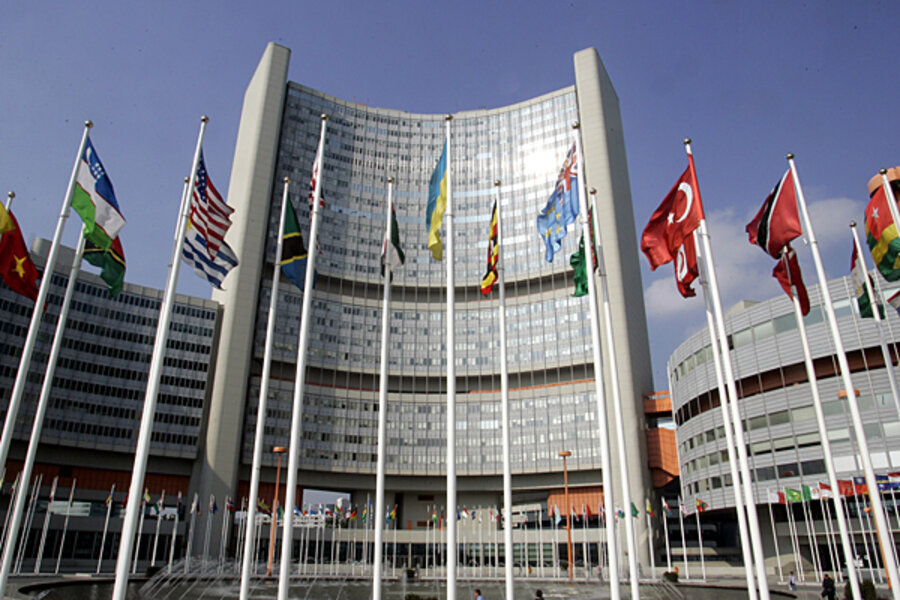Good Reads: Iran's nuclear program and America's man in Southeast Asia, Jim Thompson
Loading...
So, it appears that Iran has maintained a nuclear weapons program, and the United Nations’ International Atomic Energy Agency isn’t happy about it.
In yesterday’s Monitor, Istanbul bureau chief Scott Peterson lays out the evidence and what it tells us about how far Iranian scientists had gotten to building a nuclear explosive device, and fitting it into missiles. The documentation for the IAEA report came from “a laptop said by the US to have been spirited out of Iran in 2004.”
Peterson also notes that the trail of evidence for Iran’s nuclear program leads to the father of Pakistan’s nuclear weapons program, A.Q. Khan, who apparently gave information on how to build a bomb to Libya.
The IAEA also noted that Iran has received a "similar package of information" from the illegal nuclear network of Pakistani A. Q. Khan that had been given to Libya. That information, seen in Libya by the IAEA in 2004, "included details on the design and construction of, and the manufacture of components for, a nuclear explosive device."
The Guardian includes all those juicy details about how to enrich uranium – surely you’ll remember this from your high school physics class – and writer Julian Borger notes that the IAEA took special care in its investigation, knowing that it had to overcome global skepticism about the source and reliability of its information.
"What is striking is the totality and breadth of the information. Virtually every component of warhead research has been pursued by Iran," said a source close to the IAEA. "The agency has very, very, high confidence in its analysis. It did not want to make a mistake, and it was aware it had a very high threshold of credibility to meet. So it would not be published unless they had that high level of confidence."
In The New York Times, David E. Sanger and William J. Broad note that the IAEA is generally an agency noted for its caution, which makes this report all the more striking – and, even for some skeptics, convincing.
The I.A.E.A. report’s detailed revelations are a fascinating role reversal from 2003, when the United States and Britain claimed Iraq was seeking to rekindle its nuclear program. In that case, the agency warned that the Bush administration’s case was weak and that some of the evidence was forged. Now, it is the normally cautious agency that is taking the lead, arguing that years of study had led it to the conclusion that, despite Iran’s denials, the country engaged in an active program to design nuclear warheads, among other technologies.
Yet not everyone is convinced by the IAEA report. Al Jazeera’s English website notes that Russia and China apparently both lobbied the IAEA to not even publish its report. Russia believes that the report was released specifically to scuttle any chances of a diplomatic solution.
"We have serious doubts about the justification for steps to reveal contents of the report to a broad public, primarily because it is precisely now that certain chances for the renewal of dialogue between the 'sextet' of international mediators and Tehran have begun to appear," the Russian foreign ministry said in a statement.
All of this cloak-and-dagger, of course, just puts one in the mood for a Graham Greene or John Le Carre novel, or better yet, a nice long Foreign Policy profile of real-life spy – and fabric entrepreneur – Jim Thompson.
Anybody who has visited Bangkok and come away with richly patterned silk shirts will know of Jim Thompson as the man who may have saved Thailand’s silk industry after World War II. But he was also America’s man in Bangkok, working for the Office of Strategic Services, the precursor to the Central Intelligence Agency (CIA).
Joshua Kurlantzick in Foreign Policy does an excellent job of detailing how Thompson fought to help liberate Southeast Asian countries from colonial control, and how, when America saw its priorities change to fighting communism, Thompson mysteriously disappeared.
Thompson did not only have a unique affection for Laotians; he truly believed that, as President Franklin D. Roosevelt had promised during World War II, the United States would help free countries from colonial masters and set them on the road to democracy. Neighbors on all sides of Thailand -- Indochina, Burma, India, and Indonesia -- were deep in it. "Jim was an idealist, a romantic, an anti-imperialist, and there was no more idealistic time than just after the war," remembered Rolland Bushner, who served in the U.S. Embassy in Bangkok. "We had stood with the anti-colonialists, the democrats, in the war, and we expected that would continue."





